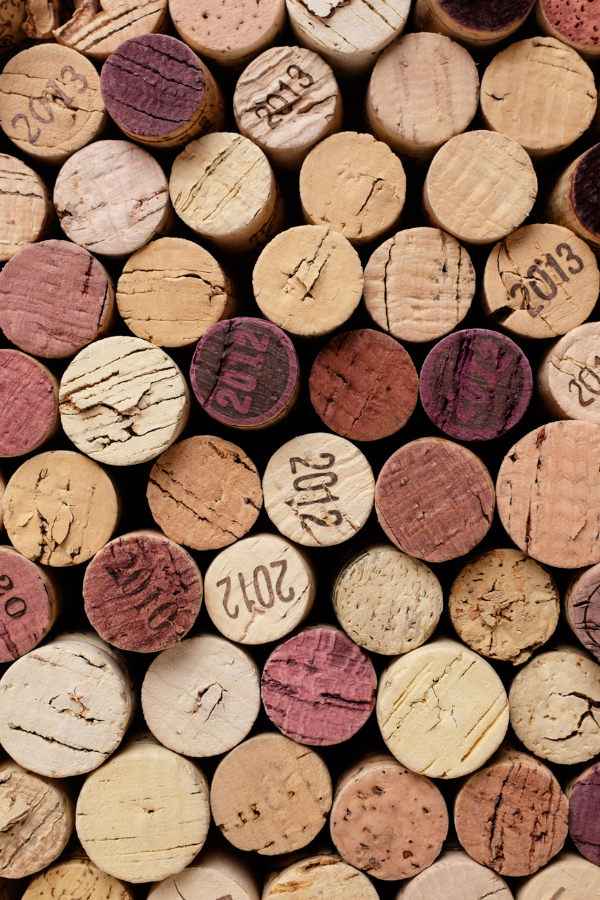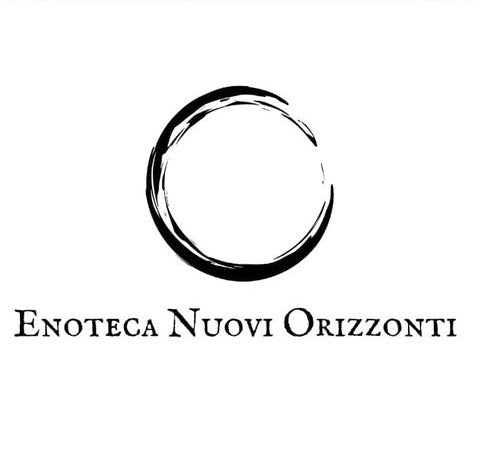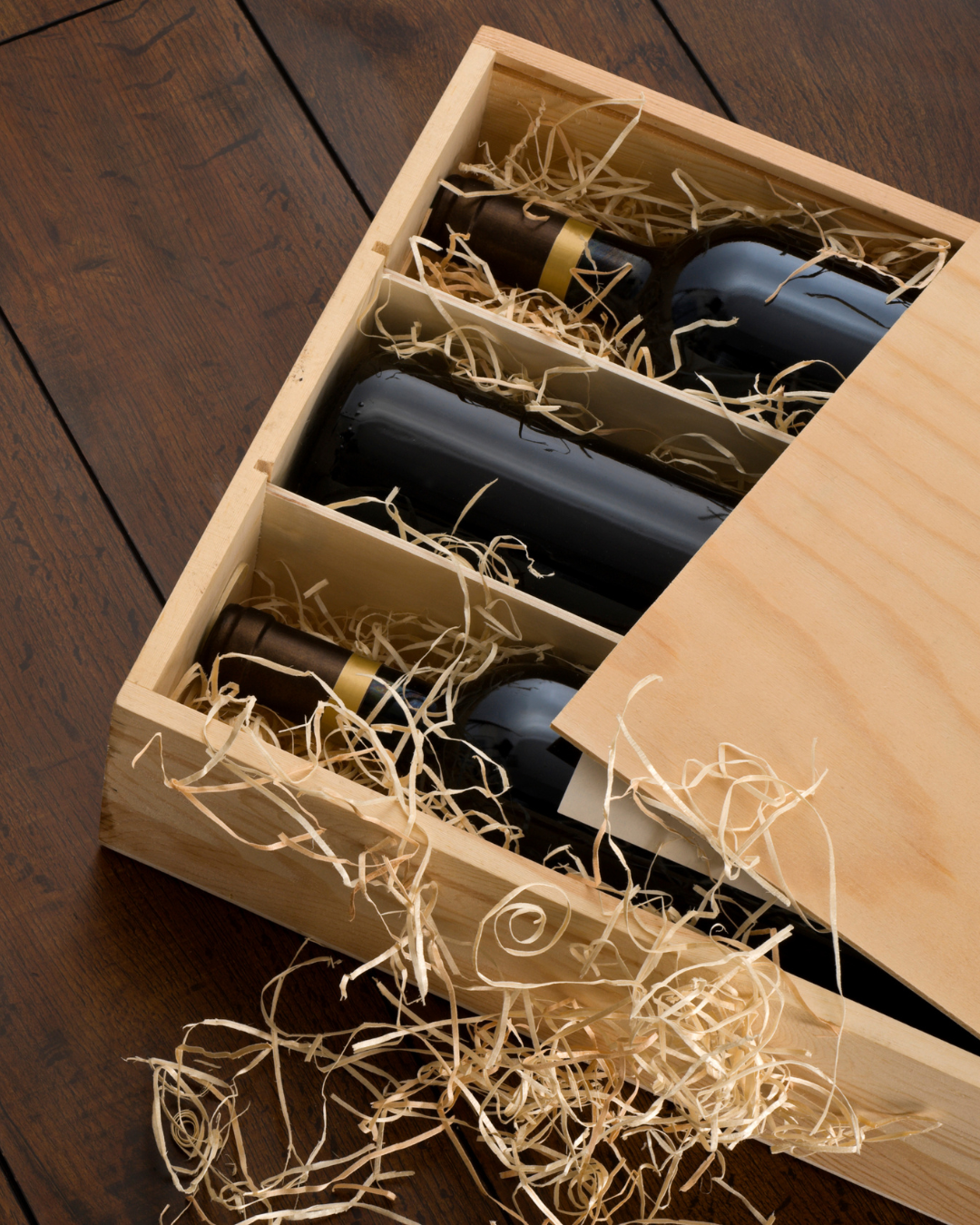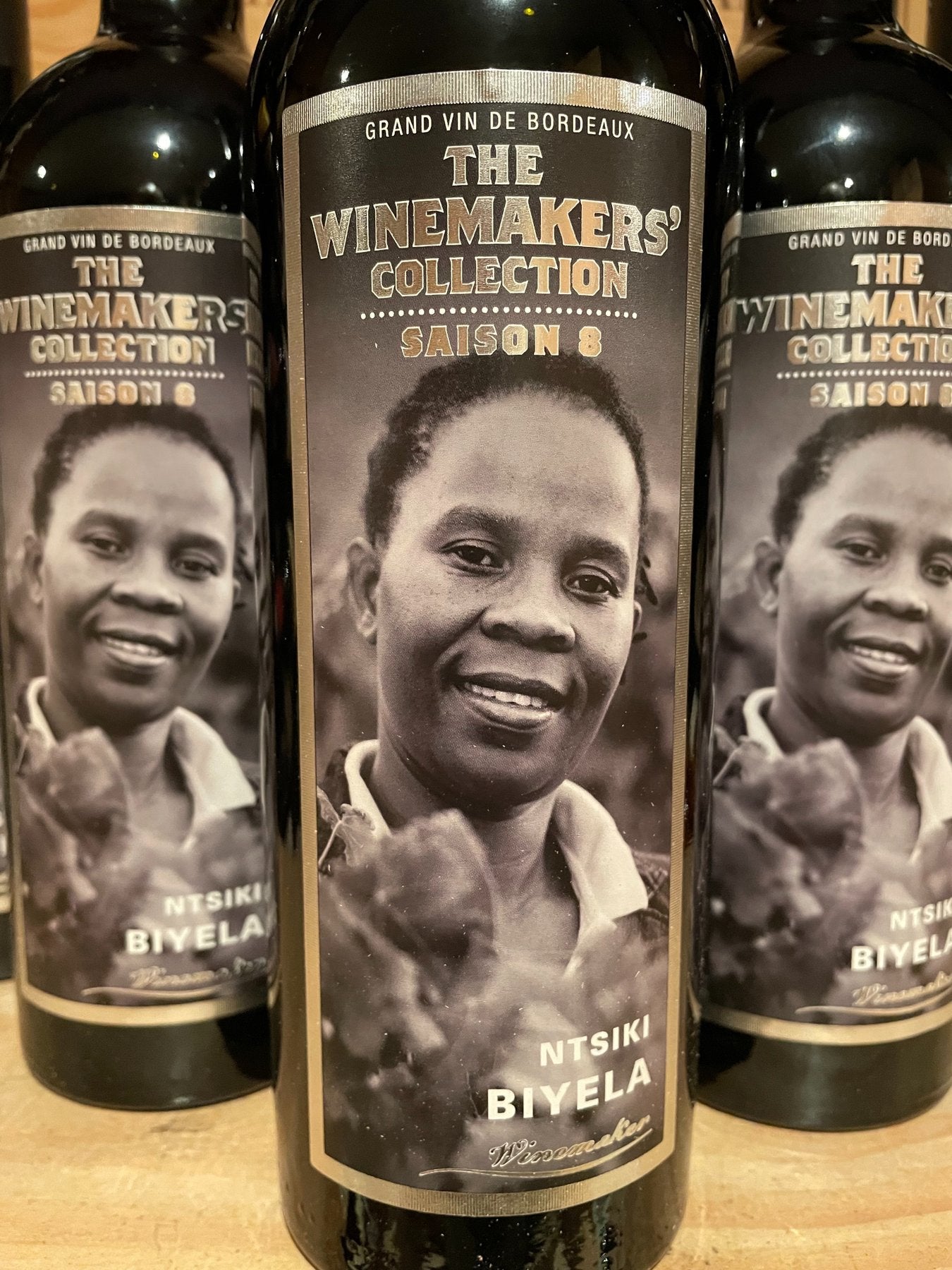
10% off your first order
Sort by:
22 products
22 products
Château Grand Corbin 2016 Saint-Émilion Grand Cru
Il "Château Grand Corbin" è un'importante tenuta di Saint-Émilion, sulla "rive droite" (riva destra) di Bordeaux, famosa per i suoi vini a base di Merlot. L'annata 2016 è considerata eccellente in tutta la regione di Bordeaux, e questo vino ne è un esempio lampante.
Descrizione del vino e dell'annata:
-
Vitigni: L'uvaggio è prevalentemente a base di Merlot, seguito da Cabernet Franc e una piccola percentuale di Cabernet Sauvignon. Il Merlot conferisce al vino morbidezza, rotondità e un frutto generoso, mentre il Cabernet Franc aggiunge struttura e complessità aromatica.
-
Annata 2016: A Saint-Émilion, il 2016 è stato un anno caratterizzato da un'estate calda e secca, ma con notti fresche, condizioni ideali che hanno permesso una maturazione lenta e completa delle uve. Il risultato sono vini con una grande concentrazione e un ottimo equilibrio tra frutto, acidità e tannini.
-
Affinamento: Il vino matura in barrique di rovere per un periodo prolungato, con una percentuale di legno nuovo che varia a seconda delle annate. Questo passaggio in legno contribuisce a integrare i tannini e ad aggiungere note speziate e tostate.
-
Note di degustazione:
-
Colore: Si presenta con un colore rosso granato profondo e intenso.
-
Naso: Il bouquet è ricco e seducente. Si percepiscono aromi di frutta nera matura, come prugna e mora, note di liquirizia, spezie dolci, tabacco e un tocco di mineralità. Il passaggio in barrique aggiunge sentori di vaniglia e cioccolato.
-
Palato: In bocca è un vino potente e ben strutturato, ma al tempo stesso elegante. I tannini sono presenti, ma molto fini e levigati, offrendo una sensazione setosa. Il finale è lungo, persistente e avvolgente.
-
Abbinamenti e potenziale: Grazie alla sua struttura e complessità, si abbina splendidamente a piatti di carne rossa, selvaggina e formaggi stagionati. L'annata 2016 ha un ottimo potenziale di invecchiamento e può essere conservata per molti anni, sviluppando ulteriormente la sua complessità.
Il "Margaux de Brane 2019" è il secondo vino dello Château Brane-Cantenac, una prestigiosa tenuta situata nel cuore della denominazione Margaux, a Bordeaux, in Francia.
Ecco una descrizione generale e le note di degustazione:
Caratteristiche del vino e annata:
-
Annata 2019: È considerata un'annata eccezionale a Bordeaux. In questo millesimo, l'assemblaggio di Château Brane-Cantenac vede una maggiore percentuale di Cabernet Sauvignon, contribuendo a un vino di grande struttura e potenziale di invecchiamento.
-
Vitigni: L'assemblaggio tipico è dominato dal Cabernet Sauvignon, seguito da Merlot, con piccole percentuali di Cabernet Franc e, talvolta, Petit Verdot e Carménère.
-
Affinamento: Il vino matura in barrique di rovere per un periodo di circa 18 mesi, con una percentuale variabile di legno nuovo che conferisce complessità e struttura.
-
Potenziale di invecchiamento: Pur essendo già molto piacevole da giovane, è un vino che può beneficiare di un lungo invecchiamento per sviluppare ulteriormente la sua complessità.
Note di degustazione:
-
Aspetto: Si presenta con un colore rosso porpora intenso, con riflessi violacei.
-
Naso: Il bouquet è espressivo e complesso. Si possono percepire aromi di frutta nera matura, come ribes nero e mora, note speziate di pepe e tabacco, sentori di grafite e un delicato tocco di cedro o legno tostato. Non mancano inoltre sfumature floreali come la peonia e la violetta.
-
Palato: Al palato è un vino corposo e ben strutturato. La texture è setosa, con tannini fini e ben integrati. L'acidità è equilibrata e contribuisce a una sensazione di freschezza. I sapori di frutta si uniscono a note di cioccolato e vaniglia, arricchite da un retrogusto lungo ed elegante.
In sintesi, il Margaux de Brane 2019 è un vino che esprime l'eleganza tipica della sua denominazione, con una notevole complessità aromatica e una struttura equilibrata che lo rende un eccellente compagno per carni rosse, formaggi stagionati e piatti della tradizione bordolese.
Per
Il vino Château Lirette 2010 è un classico Bordeaux che si presenta con un colore rosso rubino intenso. Al naso offre un bouquet interessante di frutti di bosco, come ribes e mirtilli, combinati con note speziate e terrose.
In bocca, questo vino è buono, con una struttura equilibrata e tannini morbidi. Il gusto interessante persiste, offrendo un finale buono e duraturo che lo rende un vino Bordeaux decisamente interessante da scoprire.
Per gli amanti del buon vino un ottimo compromesso che secondo il mio giudizio rende al meglio se decantato qualche ora prima.
Profondamente radicata nella vigna fin dal 1580, la famiglia Beyer ha tramandato la sua passione per il vino di generazione in generazione.
Questa antica memoria familiare è garanzia del loro savoir-faire. Numerosi archivi, documenti e diari, scrupolosamente conservati, sono la memoria viva della loro tenuta vinicola. Immersi nella storia regionale, questi documenti sono stati scritti in francese antico o in tedesco antico. Raccontano la storia della loro passione: il vigneto di Eguisheim.
Le origini della famiglia Beyer si fondono con la storia della viticoltura alsaziana. Gli archivi della tenuta attestano la sua presenza a Eguisheim già alla fine del XVI secolo.
Il Gewürztraminer, un vitigno a bacca bianca espressivo e aromaticamente distintivo, è considerato una varietà nobile in Alsazia, in Francia, e produce vini meravigliosi nella regione montuosa dell'Alto Adige, nel nord-est dell'Italia.
Generalmente, quest'uva cresce bene nelle regioni più fresche e la sua naturale intensità lo rende un ottimo alleato per la cucina saporita come quella indiana, mediorientale o marocchina.
Somm Secret: grazie al suo profumo affascinante e alla sua tendenza alla leggera dolcezza, il Gewürztraminer è un eccellente vino di ingresso per chi ama i vini dolci ma desidera avventurarsi nel regno dei bianchi più secchi.
Pompelmo, frutto della passione, papaya, spezie e zenzero.
L'aerazione esalta questi profumi e rivela note di mango e un leggero sentore floreale di peonia. L'attacco in bocca è moderatamente ampio e morbido. La classe dell'annata mitiga l'ampiezza del vitigno. Caratterizzato da una palette aromatica sofisticata e delicata, questo profilo è notevole.
Si abbina perfettamente a un curry di gamberi in latte di cocco, a una fricassea di pollo al cumino con salsa alla senape o anche a un formaggio a pasta molle a crosta lavata.
Il Gewurztraminer Tradition 2019 di Emile Beyer è un eccezionale vino bianco che incarna perfettamente l'anima della viticoltura in Alsazia. Questo vino bianco si distingue per il suo colore giallo brillante e un profumo intenso e aromatico, tipico del vitigno.
La sua Alsazia si esprime nel bouquet esuberante, dove si fondono sentori di litchi, rosa, zenzero e frutti tropicali. La degustazione rivela un ottimo sapore: è un vino bianco morbido e avvolgente, ma al contempo vivace, con un equilibrio perfetto tra dolcezza e freschezza.
Il suo ottimo sapore persistente lo rende ideale in abbinamento a piatti complessi. La sua complessità e il suo carattere forte lo rendono un vino adatto a tutti i pasti.
Château Pépusque, located in the Minervois appellation in the Languedoc region of France, presents its 2022 "Cuvée Marco," an exceptional white wine. This cuvée is made with carefully selected regional grapes, reflecting the diverse and natural terroir of Languedoc, where the Mediterranean climate provides warm, sunny summers. The winemaking process is geared toward the pure expression of aromas, resulting in a lively yet elegant wine. The region, rich in diverse soils ranging from limestone to clay-limestone, is home to generous and authentic wines. Renowned for its commitment to tradition and quality, Château Pépusque is a respected benchmark in the local winemaking scene.
To pair this Languedoc white wine, consider dishes such as seafood, a warm goat's cheese salad, or fish in a light sauce. The fresh, fruity flavors of the "Cuvée Marco" pair perfectly with the delicate textures and light notes of these dishes.
Also opt for regional dishes such as cod brandade or bouillabaisse, which will blend harmoniously with the minerality and elegance of this wine.
When tasting, serve this wine between 10 and 12°C to appreciate all its aromatic nuances.
Decanting is generally not necessary, although gentle aeration can reveal its complexity. When tasting, observe its bright color, smell the floral and fruity aromas it releases, then savor its freshness and persistence on the palate. This wine promises an enriching experience for lovers of expressive and refined white wines.
It has an intense straw yellow colour tending towards golden.
On the nose, fresh fruity aromas emerge, with light notes of woodiness and almond.
On the palate it is full-bodied, warm, round, dry and fresh.
This wine will be perfect to accompany festive moments, as an aperitif with shrimp gyoza and a touch of coriander, or even with crunchy tempura vegetables such as courgettes, green asparagus or even the delicacy of aubergines.
Every vintage since 2005, Philippe Raoux, owner of Château d'Arsac (Margaux), has invited a different winemaker to oversee the harvest on a plot of approximately ten hectares. This year, he has entrusted the reins to a Zulu winemaker, Ntsiki Biyela.
A land, a vineyard, a person. "The idea is to demonstrate that, of these three essential elements in winemaking, the third prevails."
Philippe Raoux smiles. Since 2005, he's invited a different winemaker to his vineyard, Château d'Arsac, every year. And he gives them carte blanche. Their mission: to choose the vineyard plots on the property, direct the harvest, oversee the vinification, blending, and aging of the wine, until finally creating his cuvée.
Selected from among internationally renowned professionals, seven winemakers produced "their" wine from the same material. They stayed at the estate seven or eight times for the duration of an adventure similar in format to an artist residency.
All the invited winemakers were given nicknames. Michel Rolland, aka "The Magician," inaugurated the series in 2005, followed by another Frenchman, Denis Dubourdieu, "The Professor." Later, the Italian "Poet" Andrea Franchetti, the Frenchmen Stéphane Derenoncourt ("The Autodidact") and Éric Boissenot ("The Médocain"), Californian Zelma Long ("The Scientist"), and Argentinean "Virtuosa" Susana Balbo, flexed their talents.
Each worked about ten hectares to produce a vintage of around 30,000 bottles. "The results are astonishing," enthuses Philippe Raoux. "It's as if we asked musicians from different backgrounds to play the same score. Today we can compare the vintages and discern in each the strong personality of these winemakers."
"This experience also increases our open-mindedness; each of the invited winemakers has specific requests for working in their own way," he continues. Some asked for the barrels to be placed outside during the day and brought inside at night. For others, it was necessary to split the entire vine, or remove the branches from the bunches to keep only the grapes attached to the main stalk...
Conceived with Jean-François Moueix and Dominique Renard, but later developed by Philippe Raoux, the concept is unique
Called "The Winemakers' Collection," the collection is commercially available with imagery borrowed from the movies. Each vintage's label features a black-and-white portrait of its producer, like a movie poster.
Retailing for between €300 and €350, the box set containing the first six volumes of the collection features a Hollywood-style pop-up setting, complete with spotlights and a folding producer's chair.
This fall, Zulu winemaker Ntsiki Biyela will arrive from South Africa to produce her eighth vintage, dubbed "Season 8" in honor of the American TV series. A box set featuring the first four female guests is already in the works. And like her predecessors, Ntsiki Biyela will have her name engraved on a bronze plaque embedded in the cellar floor: "Winemakers Boulevard."
Esprit de Pavie is a Bordeaux AOC wine blending 65% Merlot, 20% Cabernet Franc, and 15% Cabernet Sauvignon from both the renowned Château Pavie in Saint-Émilion and the nearby Château Clos L'Église in the Côtes de Castillon, purchased by Pavie's owner, Gérard Perse. The nose presents herbaceous notes of cedar and tobacco, followed by bold cherry and Asian fruit. The firmness is also evident on the palate, with a hint of licorice supporting the dark fruit, and a crisp finish that pairs well with food.
Excellent with red meats, chicken and cheeses, it is a must in your cellar.
The ninth estate in the Vignobles Jeanjean collection is located in the prestigious Pic St. Loup appellation, north of Montpellier, a name derived from the distinctive 658-meter-high mountain that dominates the region. A unique and omnipresent place for all Montpellier residents, but above all, a renowned and recognized appellation.
The Pic St. Loup is a place of legends, hikes, and winemakers. In this setting, the Domaine des Rocs embodies all the freshness of the Pic.
It is in fact one of the coolest and most humid appellations in Languedoc, at the foot of the Cévennes, which produces delicate, elegant and fresh wines.
The estate's 13 hectares are mainly planted with Syrah and Grenache.
This wine pairs very well with all red meats, but also with tasty cheeses.
Situated in a region packed with historical interest, this award-winning Domaine is perched on a hilltop overlooking the Saône Plain in Mâcon. Close by is the Paleolithic archaeological site Pech de l'Aze, which proves that agricultural activity has gone on in this region since the Iron Age. By comparison, at Domaine des Terre Gentilles, winemaking has been taking place over a considerably shorter space of time but with equal cultural significance. Most of this Domaine's vineyards were originally cultivated by monks at the Medieval Christian Abbey at Cluny. Established in 1921 by Jean-Pierre Marillier, this award-winning 36-hectare family-owned estate is now expertly run by son and rising star winemaker Mikaël Marillier who is now creating benchmark Mâcon-Village wines.
For wild turkey, which has more of a gamey character, pork or chicken, this is a very good pairing.
The first estate in the Jura region to adopt organic farming practices, Le Clos des Grives has been Ecocert certified since 1968.
Made from 100% Savagnin Olle grapes, this wine boasts a delicious and inviting nose with notes of hazelnut.
On the palate it is round and silky, with spicy notes and pronounced hazelnut flavors, all complemented by a finish of remarkable persistence.
The Saint-Joseph appellation covers 1,200 hectares and is located on the right bank of the Rhône River. The soils are homogeneous, primarily granite rock and rarely limestone. The slopes are steep, and the vineyards are planted on terraces. The white wines (20% of production) are made from the Marsanne and Roussane grape varieties.
This producer ages its white wines in wooden barrels for up to ten months, giving the wine a slightly oaky flavor that places it among the best produced in the Saint Joseph district.
The wine is harvested strictly by hand, without the use of machinery that could damage the rows.
Complex and aromatic, with notes of white flowers, honey, apricot, peach and lime
On the palate: Fresh, mineral and lively, with a lovely lemony and velvety persistence.
On the nose we find notes of white fruit, as well as hints of flint and citrus peel.
Good with white fish, seafood, but it is at its best when tasted with white meat, chicken, rooster, pork thanks to its aging in wood.
Vegetarian dishes and vegetables, even fried ones, make an excellent accompaniment. It can also be served as an aperitif or with soft cheeses.
2015 "Eole" Château de Cordes - Minervois: One of the areas that produces the highest quality wine in the south of France, an incredibly fresh wine from Shiraz/Syrah and Grenache grapes that give a deep and intense flavor, a wine with fruity flavors with aromas of fruit such as raspberry or blackcurrant, excellent to pair with beef, specifically with an excellent beef stew or veal.

2017 Domaines Edmond De Rothschild Les Lauriers - Montagne Saint-Emilion - (0.750l)
€35,00
Unit price per2017 Domaines Edmond De Rothschild Les Lauriers - Montagne Saint-Emilion - (0.750l)
€35,00
Unit price perProduced predominantly from Merlot and Cabernet Franc, Saint-Émilion wines tend to have a rich, thirst-quenching tannic structure, balanced by plum and black cherry characteristics, along with chocolate and sweet spices, developing savory tobacco and cedar characteristics with age thanks to aging in wood.
This structured wine pairs very well with aged cheeses, beef, venison and various poultry.
2015 Château Chevalier Lescours - Saint-Emilion Grand Cru - This vintage was strongly influenced by a spring that was already warm in May, an almost perfect summer that made this wine rich and intense, with hints of berries, blackcurrant and almost smoky flavors thanks to its aging in wood.
Pair with dishes such as venison, chamois, poultry or beef.
A very versatile wine for special occasions.
2019 Château L'Etoile de Viaud - Bordeaux
On the nose, it is fruity, elegant, and lively, offering richness and concentration, freshness, and a fine texture. It reveals notes of plump blackcurrant, strawberry, and subtle blackberry notes combined with hints of violet, small black berries, as well as hints of licorice and toasted bread. On the palate, it is fruity and balanced, offering a savory structure and pleasantness.
On the palate, this wine expresses notes of black cherry, plump and juicy raspberry and small notes of plump and juicy blackberry combined with small touches of plump and juicy blueberry, as well as hints of toasted bread, vanilla and very fine notes of chocolate.
The tannins are well-constructed. The finish is powerful. Good
2023 Mâcon, Grand Vin de Bourgogne Marcel de Normont - Mâcon -
A fruity and rounded wine that at the same time maintains great freshness and a small creamy note on the finish, with many hints of lemon, green apple, and passion fruit.
excellent as an aperitif with cured meats and young cheeses, or with white meat appetizers and seafood appetizers such as molluscs and crustaceans.



























